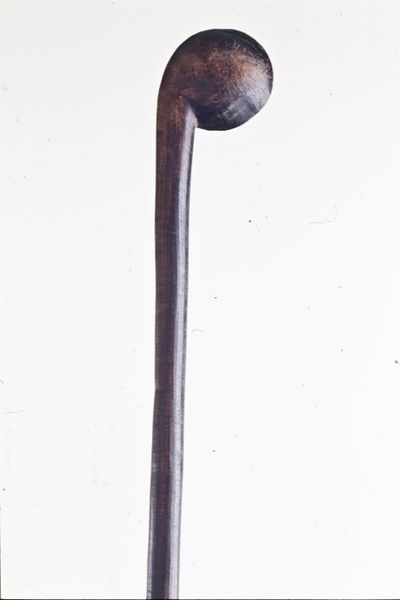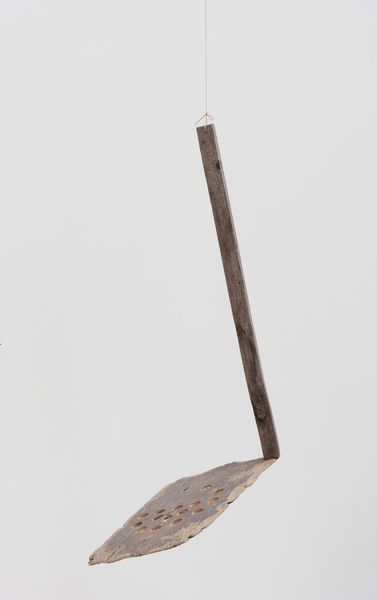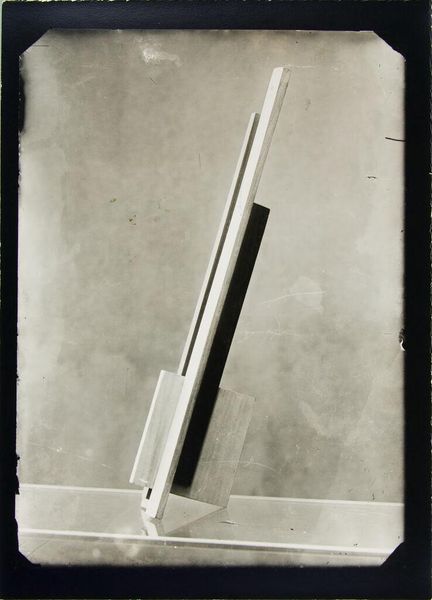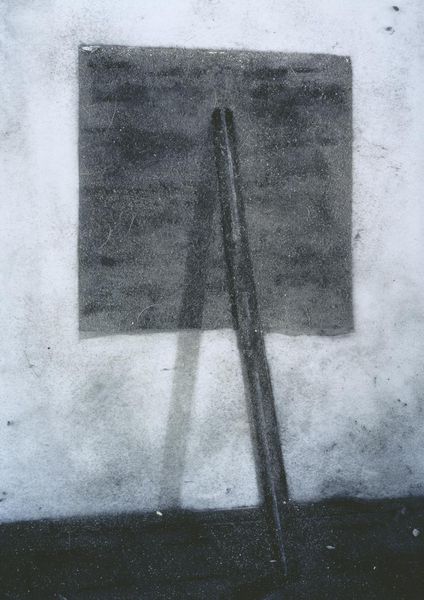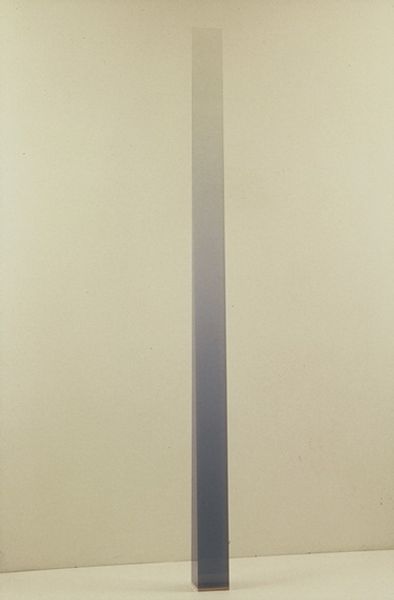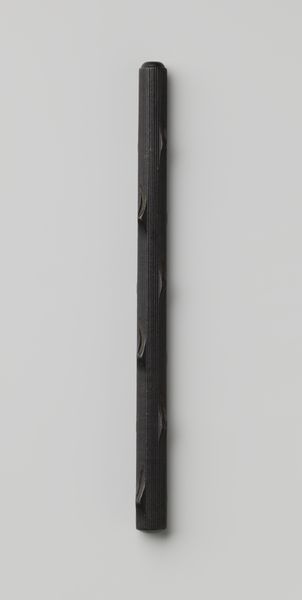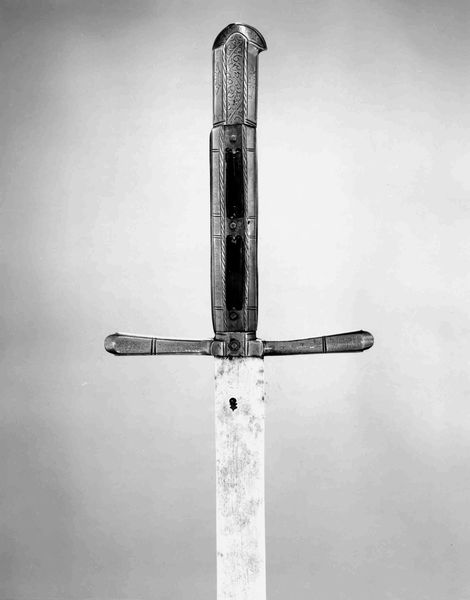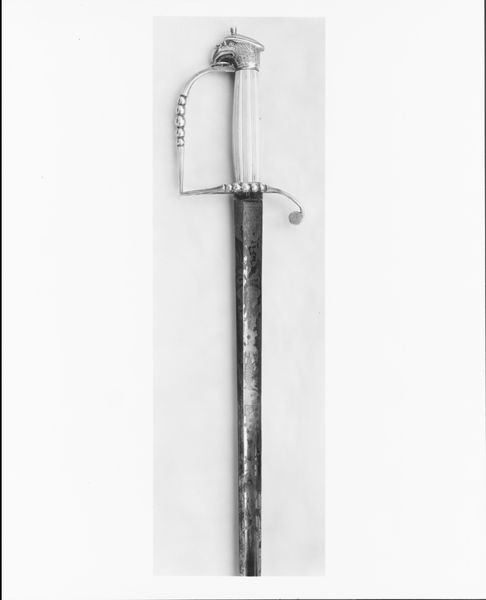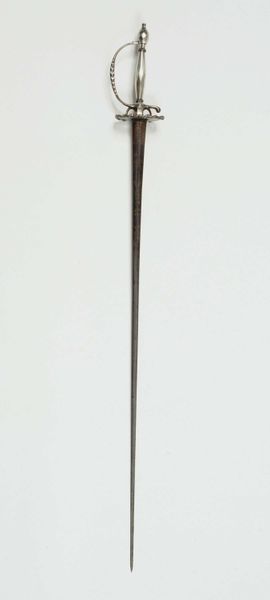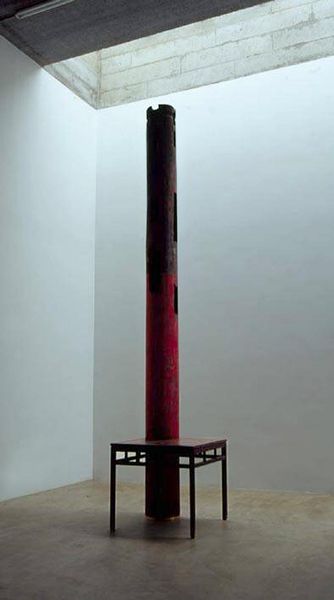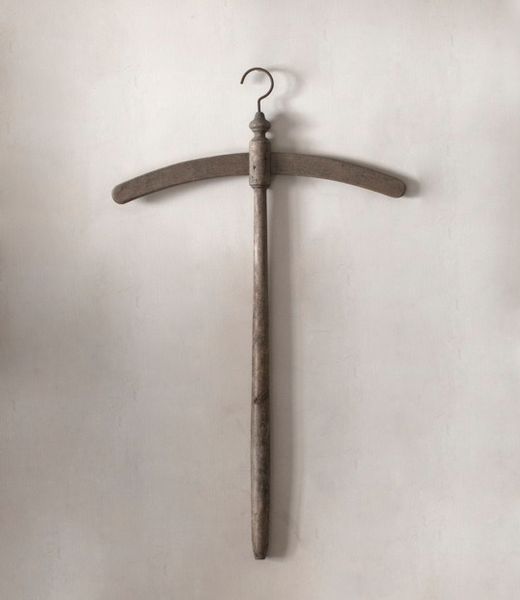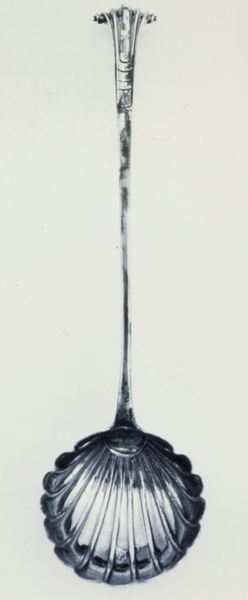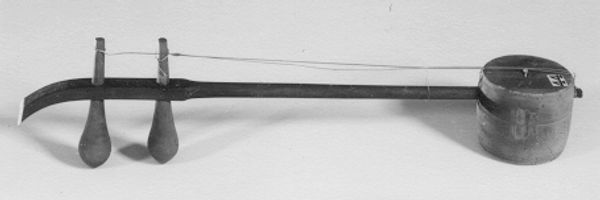
metal, sculpture
#
minimalism
#
metal
#
sculpture
#
geometric
#
sculpture
#
abstraction
#
modernism
Copyright: Michael Bolus,Fair Use
Curator: Take a moment to observe this Untitled sculpture by Michael Bolus, created around 1960. It's an excellent example of early modernist sculpture, and is primarily crafted from metal. Editor: My first impression is its deliberate awkwardness, even imbalance. It's simultaneously stark and playful, this assembly of tubes refusing to comfortably resolve. I am really struck by the way it engages the floor beneath. Curator: Precisely! Bolus's work challenged traditional notions of sculpture. By the 1960s, a younger generation questioned established monumental art in public spaces, especially war memorials, and developed less figurative forms that might offer fresh opportunities. Editor: Absolutely, it rejects any sense of grandiosity through its materiality. This looks like repurposed industrial material, elevating everyday manufacturing into something contemplative. Is there any documentation about how he worked the metal? Curator: He studied welding techniques at various colleges during the 50s. So in a sense his practice emerges from that institutional learning, but then questions it by refusing traditional form, so its location, reception, display, all impact its meaning in a gallery space. Editor: Right, welding as a working class practice – this resonates with other artists at the time exploring more radical politics of making. Even that grey base it sits on speaks to this sort of ready-made aesthetic of that time, it really puts an emphasis on the raw materiality of the piece. Curator: Which links to wider cultural themes – think of the post-war industrial boom. Metal as material reflecting social change and our evolving relationship with industry. It also speaks to debates around abstract forms becoming dominant and galleries playing new roles. Editor: Looking at the details of those metal joins—you see both skill and also, an unpolished aesthetic, and there’s tension there I find very powerful. Curator: And it makes you wonder if the sculpture, although static now, somehow contains evidence of human processes? Editor: Definitely. It is very appealing to consider the whole context and materiality in relation to abstraction itself, I can’t shake the feeling it resists perfection, or that singular ‘high art’ narrative so typical of sculptural presentation. Curator: Well, this exploration definitely reinforces the vital connection between art and its social, and indeed material, origins.
Comments
No comments
Be the first to comment and join the conversation on the ultimate creative platform.
